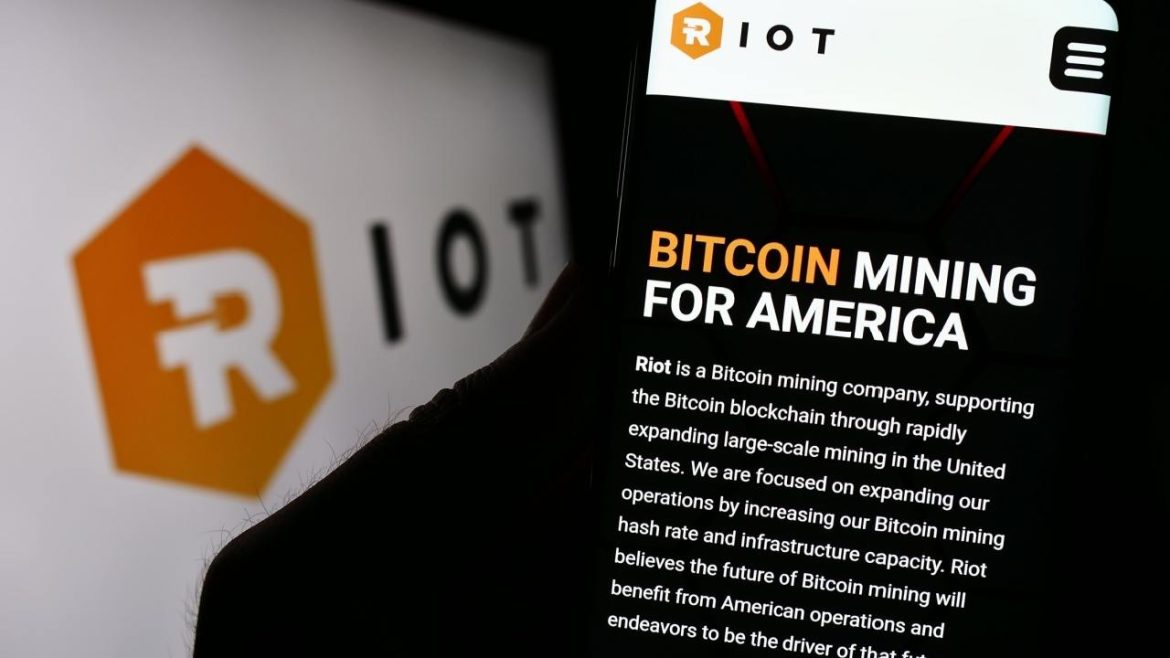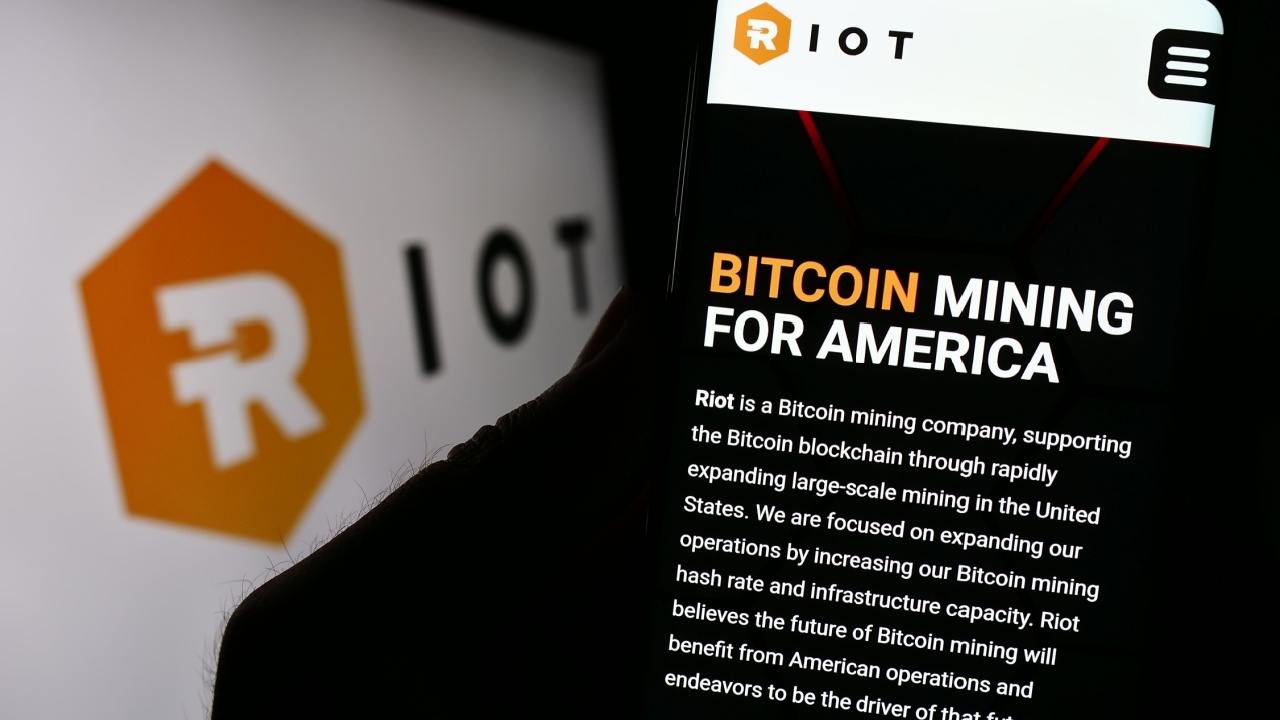Riot Platforms (NASDAQ: RIOT) operates in the dynamic and often unpredictable world of Bitcoin mining and data center hosting. The company’s recent performance reflects a complex interplay of factors, including fluctuating Bitcoin production, strategic energy management, diversification efforts, and the broader market conditions and regulatory environment. This analysis delves into Riot’s operational strengths, challenges, and future prospects, providing a comprehensive overview of its position in the cryptocurrency mining sector.
Production Performance: A Tale of Growth and Challenges
Riot’s Bitcoin production figures illustrate both the company’s potential and the inherent volatility of the mining industry. The company has experienced periods of significant growth, such as the record-breaking production in June 2025, alongside months of decreased output due to planned maintenance, elevated power prices, and strategic curtailment.
Fluctuations in Output
Riot’s production numbers have varied considerably over time. For example, August 2024 saw a notable drop in production, while January 2025 witnessed a surge, with the company mining 527 BTC, increasing its Bitcoin holdings by 3%. By June 2025, Riot achieved record production, showcasing the potential of its optimized operations. However, monthly comparisons reveal inconsistencies; June 2024 saw a 12% decrease in Bitcoin production compared to May. These fluctuations highlight the challenges of maintaining consistent output in an industry influenced by numerous external factors.
Factors Affecting Production
Several factors influence Riot’s production levels. Planned maintenance, as noted in February 2025, can temporarily reduce output. Power prices play a crucial role; higher prices may lead to curtailment, impacting production. Conversely, efficient operations and increased hash rate positively affect Bitcoin mined. Riot has consistently worked on improving its hash rate and efficiency, reporting a significant 76% annual jump in Bitcoin production alongside improvements in fleet efficiency. The company achieved a 22% efficiency improvement, reaching 21.0 J/TH, demonstrating its commitment to optimizing mining operations for greater profitability. In May, Riot reported a 139% year-over-year increase in production, mining 514 BTC.
Post-Halving Performance
Following Bitcoin’s halving event, Riot demonstrated resilience by maintaining a competitive all-in power cost, underscoring its operational efficiency. The halving event, which reduces the reward for mining new blocks, typically increases competition among miners. Riot’s ability to maintain production levels despite this challenge highlights its strategic advantages in the mining sector.
Strategic Power Management: A Key Differentiator
A central pillar of Riot’s strategy is its unique approach to power management, particularly in Texas, where it leverages the state’s energy market to its advantage. This strategic focus has become a key differentiator for the company, allowing it to navigate the challenges of the mining industry effectively.
Power Credits and Demand Response
Riot has been adept at securing power and demand response credits from the Electric Reliability Council of Texas (ERCOT). In one instance, the company secured $31.7 million in credits, representing a substantial increase. In June, Riot’s total power credits surged, while demand response credits saw a more modest increase. These credits significantly offset operational costs, providing a competitive edge. By participating in demand response programs, Riot contributes to grid stability and earns additional revenue, further enhancing its financial position.
Economic Curtailment
Riot strategically curtails its operations during periods of high energy demand, contributing to grid stability and earning credits. This “economic curtailment” is a proactive measure that benefits both the company and the energy grid. By reducing its energy consumption during peak demand periods, Riot helps prevent grid overloads and earns credits that offset its operational costs. This approach not only enhances the company’s financial performance but also demonstrates its commitment to sustainable and responsible energy management.
Impact on Power Costs
Strategic energy management has significantly reduced Riot’s power costs. The Rockdale facility achieved an all-in power cost of $20 per megawatt hour (MWh) due to optimized energy use, while the Corsicana facility achieved $39/MWh by purchasing energy at real-time spot prices. Riot kept its all-in power cost low at 3.8 cents per kWh. These cost-saving measures are crucial in an industry where energy expenses can significantly impact profitability. By optimizing its energy use and participating in demand response programs, Riot has been able to maintain competitive power costs, enhancing its overall financial performance.
Responding to Inquiries
Riot has actively addressed inquiries regarding its power strategy, emphasizing its contribution to grid stability and economic benefits. The company’s transparency and proactive communication have helped build trust with stakeholders and regulators. By clearly articulating its energy management strategies and their benefits, Riot has been able to navigate potential regulatory challenges and maintain its operational flexibility.
Financial Performance: Navigating Challenges and Opportunities
Riot’s financial health is intricately linked to Bitcoin prices, production efficiency, and strategic energy management. The company’s ability to generate revenue and manage costs effectively is crucial in an industry characterized by volatility and uncertainty.
Revenue Generation
While Bitcoin production fluctuates, Riot has found revenue streams in energy sales and power credits. Focusing on energy sales has brought the company record revenues, showcasing the diversification of income sources. By leveraging its infrastructure and strategic energy management, Riot has been able to generate additional revenue streams beyond traditional Bitcoin mining. This diversification is essential in mitigating the risks associated with the volatility of the cryptocurrency market.
Operating Costs
Rising operating costs pose a challenge for Riot. These costs can be influenced by factors such as energy prices, maintenance expenses, and expansion initiatives. The company’s strategic energy management and participation in demand response programs have helped mitigate some of these costs. However, the ongoing need to invest in new technology and infrastructure to maintain competitive advantage presents a continuous challenge. Balancing these costs with revenue generation is crucial for Riot’s long-term financial health.
Bitcoin Treasury
Riot strategically manages its Bitcoin treasury. Increasing Bitcoin holdings and actively selling BTC when advantageous can boost the company’s financial position. In June, Riot sold 397 BTC, optimizing its holdings. This strategic approach allows the company to capitalize on market opportunities and manage its financial resources effectively. By maintaining a flexible and adaptive approach to its Bitcoin holdings, Riot can navigate the volatility of the cryptocurrency market and enhance its financial stability.
Q4 2024 Results & Analysis
Q4 2024 results revealed that Riot is navigating challenges such as decreased Bitcoin production while also exploring AI diversification. Strategic power curtailment and boosting the Bitcoin treasury were key strategies amid rising operating costs and legal challenges. The company’s ability to adapt to changing market conditions and regulatory environments is crucial for its long-term success. By focusing on strategic initiatives and diversifying its revenue streams, Riot is positioning itself for growth and resilience in the face of industry challenges.
Expansion and Diversification: Looking Beyond Bitcoin Mining
Riot is actively exploring opportunities beyond traditional Bitcoin mining, including expansion and diversification into related fields. This strategic pivot is essential for the company’s long-term growth and resilience in an evolving industry.
Data Center Hosting
Riot is leveraging its infrastructure to offer data center hosting services. This diversifies revenue streams and taps into the growing demand for data storage and processing capabilities. By expanding into data center hosting, Riot can capitalize on the increasing demand for cloud computing and data storage services. This diversification not only enhances the company’s financial performance but also positions it as a key player in the broader technology sector.
AI Initiatives
Riot is considering supporting the artificial intelligence industry. This strategic pivot could capitalize on the increasing demand for AI infrastructure and potentially offset risks associated with Bitcoin’s volatility. By investing in AI-related initiatives, Riot can diversify its revenue streams and reduce its dependence on the cryptocurrency market. This strategic shift is crucial for the company’s long-term growth and resilience in an evolving technological landscape.
Credit Facility Expansion
Riot is expanding its credit facility, signaling confidence in its future growth and providing financial flexibility for strategic initiatives. The expansion of Bitcoin production and enhanced data center capabilities mark shifts in Riot’s operational focus. By securing additional financing, Riot can invest in new technologies and infrastructure, enhancing its competitive advantage and positioning itself for long-term success.
New Hires
Riot is actively recruiting for positions across the company, indicating growth and investment in its workforce. This expansion of its talent pool is essential for the company’s long-term success. By attracting and retaining top talent, Riot can drive innovation and maintain its competitive edge in the rapidly evolving technology sector.
SWOT Analysis: Strengths, Weaknesses, Opportunities, and Threats
Riot Platforms’ strategic position in the Bitcoin mining and data center hosting sectors can be analyzed through a SWOT framework, highlighting its strengths, weaknesses, opportunities, and threats.
Strengths
- Strategic power management and low power costs
- Operational efficiency and increasing hash rate
- Strong position in the North American Bitcoin mining sector
- Diversified revenue streams through energy credits and data center hosting
Weaknesses
- Fluctuations in Bitcoin production
- Dependence on Bitcoin prices and market volatility
- Exposure to regulatory risks
- Rising operating costs
Opportunities
- Expansion into AI and data center services
- Further optimization of energy strategies
- Increased Bitcoin adoption and price appreciation
- Strategic partnerships and acquisitions
Threats
- Increased competition in the Bitcoin mining industry
- Regulatory changes and potential restrictions on Bitcoin mining
- Fluctuations in energy prices
- Technological advancements rendering existing infrastructure obsolete
Conclusion: Navigating the Future of Bitcoin Mining
Riot Platforms stands at the intersection of cryptocurrency mining, energy management, and technological innovation. The company’s ability to navigate the inherent volatility of the Bitcoin market hinges on its strategic power management, operational efficiency, and diversification efforts. While fluctuations in Bitcoin production and rising operating costs present challenges, Riot’s proactive approach to energy credits, data center hosting, and exploration of AI opportunities positions it for potential long-term success. As Riot continues to adapt to market dynamics and regulatory landscapes, its strategic agility and commitment to innovation will be critical in shaping its future within the evolving digital economy. The path forward demands a balanced approach: optimizing core Bitcoin mining operations while strategically diversifying to capitalize on emerging opportunities in adjacent sectors. By leveraging its strengths and addressing its weaknesses, Riot can position itself for sustained growth and resilience in an ever-changing industry.





